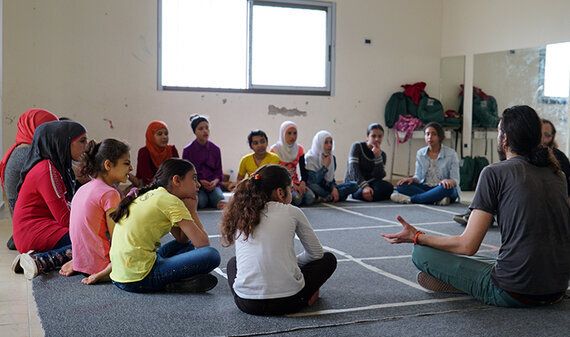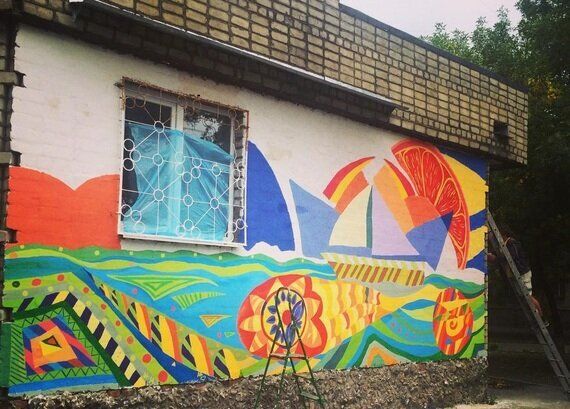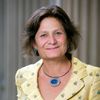
The Create Syria project strengthened the capacity and expertise of Syrian artists and cultural figures based in Lebanon
This August, as every year, Edinburgh's streets are packed with people jostling to get the hottest tickets at the Edinburgh International Festival or the world-famous Fringe. Few may realise that in 1947 the festival was founded by the British Council among others in the belief that culture could act as a beacon of hope in a continent torn apart by war. That reconciliation through art is surely needed now as much it was as 70 years ago.
After decades in which peace expanded globally, there has been a tragic rise in conflict more recently. In 2016, almost a quarter of the world's population were living in fragile situations, with more people forced to flee now than since the end of World War Two.
The thinking in 1947 was that the arts could be a neutral space to bring people together post-conflict and to celebrate humanity. In recent years, a field of practice has arisen in which artists and peacebuilders have gone beyond that, purposely coming together to use the very creation of art as a process for building peace.
"We cannot end conflict with peace agreements alone, we have to learn our way out of conflict," John Johnston, a leading practitioner who teaches about arts and peace at ArtEZ University of the Arts told me recently. "When conflict has become the norm, you need a gentle rupture, a controlled explosion if you like, to disrupt your sense of self. None of us are one self, we are all multiple selves and art can help explore that."
In many ways, arts and peacebuilding naturally walk hand in hand. Art has a power of dialogue, it can challenge the status quo and give voice to alternative narratives. Hence the connections to peacebuilding, much of which is also rooted in dialogue, and in helping people find their own voice, to listen and to communicate better. Similarly, questions of identity are central to both. The ability to get out of the boundaries of your own identity, to question yourself and appreciate the perspectives and views of others takes a truly creative leap.
But let's not assume that it is all one big happy-clappy love in. In Berdyansk, south-east Ukraine, a few residents were initially not impressed with our idea of creating a mural of peace on International Peace Day (21 September). "This is not the right time to paint, we are in a war," they said. Once the "Harbour of Peace" was created, the same people got together with locals and internally displaced people to create other murals in the town, saying that beauty helps people live in unity.

Mural of peace in Berdyansk
Sometimes peacebuilding and arts can pursue different goals, and artists can feel overloaded with expectations for dual impact. "We don't use art, we create art", Syrian artists emphasised recently in Lebanon, where International Alert and the British Council work with Syrian youth and children to promote self-expression, collaboration and peace through arts. To these artists, the aesthetic and artistic quality mattered every bit as much as the peacebuilding processes they nurture.
The Create Syria project sought innovative ways of supporting the engagement of Syrians in exile with their Lebanese hosts. It has increased access to culture for communities, and created stronger connections between artists displaced from their own communities by the war. A recent evaluation of the project highlighted the therapeutic and transformative role of arts for participants. In Beqaa Valley, for example, an introverted, angry and sometimes violent 12-year old became more communicative, expressive and calmer after attending the music and community theatre workshops.
But it was not always a smooth ride. Reconciliation takes time, and too often, arts, like peacebuilding only receive short-term funding. In one example, once Lebanese participants realised that the project was run by Syrians, they stopped coming. These challenges need time to work through and dedicated skills which some artists may not have, and longer term funding is needed to help build bridges across divides.
It is also challenging for donors as the results are hard to measure. Peacebuilding is always an art not a science, challenging those who want fast results with concrete, hard data. Arts are even harder to evaluate, and putting the two together is probably an evaluator's nightmare.
When the guns have finally fallen silent, artists can step into the ruins of people's lives and help them rebuild. At the point you can feel again, you can feel the art. Which is why despite any challenges, we must continue to build on the extraordinary power of arts to create dialogue, and nurture peace.
Harriet Lamb is speaking at 'Arts in the Aftermath of Conflict', Wednesday 9 August at The Studio, Edinburgh. The event is part of the 'Spirit of '47' season, a collaboration between the British Council & the Edinburgh International Festival.
